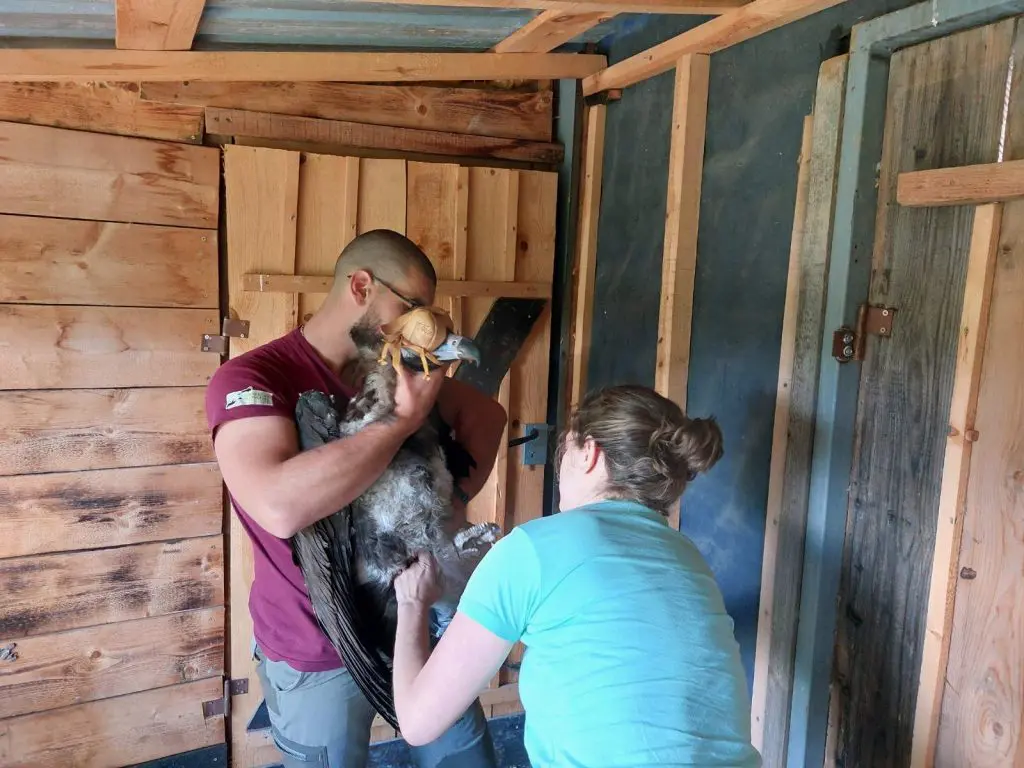
The Cinereous Vulture was declared extinct as a breeding species in Portugal about five decades ago, but thanks to conservation actions it is now breeding again, with pairs gradually increasing in the country! Since 2015, the species has been successfully breeding in Herdade da Contenda, in the eastern Alentejo, and now there is a film showcasing this fantastic comeback story!
Cinereous Vulture in Portugal
The Cinereous Vultures became extinct as breeding species in Portugal in the 1970s, mostly due to the use of poisoned carcasses targeting unwanted predators. An increasing population in Spain saw the species regularly visiting Portugal to forage, with the first pair breeding in central Portugal (Tejo Internacional) in 2010 (where now there is a small colony of more than fifteen pairs), and then in north-eastern Portugal (one single pair). And in 2015 the species recolonised Herdade da Contenda in south-eastern Portugal, and has bred there successfully ever since – there are at least eight breeding pairs there now.
Working for the recovery of Cinereous Vultures
With the recovery of the species in Spain, there has been a range of conservation projects supporting the conservation of the Cinereous Vultures in Portugal such as the cross-border LIFE Rupis project in the Douro Canyon. Liga para a protecção da natureza (LPN) also led on a multimillion Euro conservation project, Habitat Lince Abutre, which came to an end in 2014 and was supported by the EU’s LIFE+ programme. The project established a network of 10 feeding sites and constructed 30 artificial nesting platforms in and around the Herdade da Contenda, which were instrumental to the successful breeding of pairs in southern Portugal.
Tracking Portuguese Cinereous Vultures

In the summer of 2018, the first-ever Portuguese Cinereous Vulture was tagged with a GPS tag, which was provided by us at the Vulture Conservation Foundation (VCF). Tracking the movements of the species is important as it helps conservationists understand their foraging ranges and habits, and it also allows them to realise when a vulture is no longer moving and potentially injured, and to respond accordingly. This information is also vital to reveal any threats the vultures may face during their travels, giving insights to conservationists that will allow them to carry out actions to reduce the threats they face and help support the comeback of the species in the area.
Film: the return of the Cinereous Vulture in Herdade da Contenda
Wildstep Productions, from the acclaimed wildlife filmmakers Daniel Pinheiro and Luís Pinheiro, have recently produced a documentary film for Herdade da Contenda focusing on the biodiversity of Contenda. The video, co-funded by Interreg V A España-Portugal, as part of the Orniturismo Project, addresses the history, landscape and biodiversity of the Herdade da Contenda, with emphasis on the Cinereous Vulture and the conservation project of the species. Enjoy!
The Cinereous Vulture started to breed in Contenda again in 2015, which is now the second biggest colony in the country, and is increasing every year — an important milestone for vulture conservation. In the film, you can follow the movements of Murtigão, the first Cinereous Vulture that hatched in Contenda in April 2018. He was also the first Portuguese Cinereous Vulture ever to be tagged — marked in the field by LPN with a GPS tag provided by us at the VCF. The GPS movements of Murtigão stopped in January 2020, but after inspecting the grounds, it seems that it just lost it and we are hoping that the vulture is well.
Here’s to more conservation optimism stories!
Sign up to our newsletter and never miss any vulture news!





